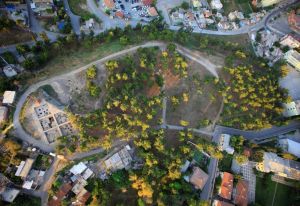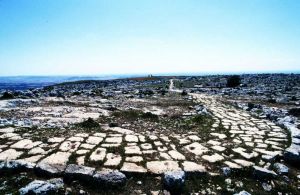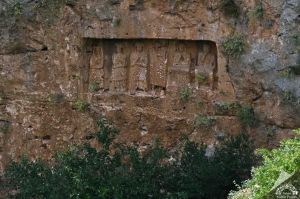The glasses mound.
The glasses mound.
The Eyewitness Cave, consisting of two identical hills, is 300 m long and 22 m wide. Archaeological excavations, which began on the hill in 1935, show that it was inhabited continuously from the Early Neolithic to the Ottoman Civilization. Among the archaeological artifacts found in the 33 culture layers counted are "Local Cilician, Mesopotamian and Mycenaean Pottery, Stone-based brick walls, houses and narrow streets of the Early Bronze Age, Layers of the Late Bronze Age, Finds of a large temple remains showing temple features in Hattusha, Early Period Building Complexes". Archaeological findings show that the mound layers (especially the layer from the Early Bronze Age to the Hittite layers) contain important information for the relations of the Eastern Mediterranean, Cyprus and Egypt. A structure belonging to the Hittite Civilization located within these layers is important in terms of documenting the "first use of silk in Anatolia". Among the spectacular artifacts found in the cave are "the remains of a bronze-making and processing workshop, hieroglyphic and nailed seals and headpieces, ceramic vases of Cypriot origin, tablets from the Assyrian Period, and baked clay seals".







Değerlendirmeler